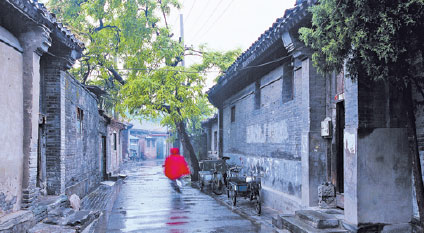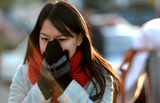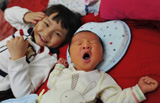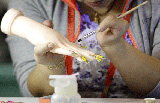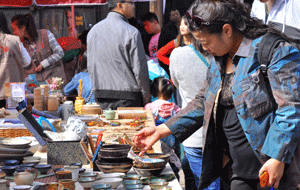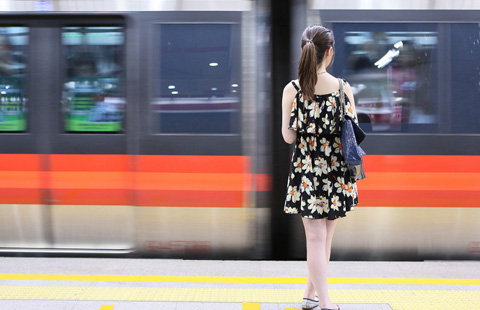Routes offer glimpse into capital's past
By Xiao Lixin (China Daily) Updated: 2014-12-01 07:32When one talks about Beijing, one of the first things that comes to mind, in addition to the signature historical scenery such as the undulating Great Wall, or the Forbidden City with its red walls and green tiles, is hutong.
Each year, the capital's many hutong have attracted millions of tourists who try to get a glimpse of the folk customs and see what the life of Beijing natives has been like, both in the present and in the past.
Among the hutong clusters in Beijing, two major and classic routes are favored by tourists - one south of the city in Dashilan, around the Qianmen area; and the other in the city's north, along the Shichahai area.
Consisting of Xihai, Houhai and Qianhai, the long and narrow Shichahai area is a fusion of historical and modern Beijing. Among the 25 historical and cultural scenic districts that the Beijing local government declared in 2000, this area is the largest and has a long history of witnessing the urban changes that have occurred in the inner city.
Li Yongfu, born and raised in Shichahai and a senior member of the famous Houhai Ba Ye, the tricycle hutong tour-guide team approved by the local tourism authority, said several good routes give a taste of the old Beijing scenery around Shichahai.
Starting from Qianhai square, tourists can either take a tricycle tour that includes an introduction of major scenic spots, or walk north along Qianhai to Yinding Bridge and Yandai byway, two frequently visited destinations. They can then head northeast along Houhai, which will cover Guanghua Temple, the Mansion of Prince Chun and the former residence of Soong Ching-ling, and then head back the same way.
Travelers can also choose to cross the Yinding Bridge to have a closer look at the Jinsitao area, walk along the other bank of Houhai toward the west and turn south to visit Prince Kung Mansion near the Daxiangfeng hutong, after passing the Dongkoudai hutong and Ximeichang hutong. The tour could end at the Qianhai West Street, site of the former residence of Guo Moruo.
Tourists who fancy a look at the night life of Beijing might like to drop by the widely known bar street along Houhai. The catering business of pubs and diners on the bar street of Shichahai began in 2003 and has been extremely brisk ever since.
The "eight big hutong" in Dashilan, south of Tian'anmen Square, used to be the capital's main red-light district in old times. But today this area, which actually has far more than eight hutong, is a major commercial area and a frequently visited destination by tourists, both from home and abroad, to experience the unique hutong culture that influences the Beijing locals from generation to generation.
Most famous among the hutong in the Dashilan area is Qianshi hutong, or the "money market hutong", which gained its fame for being Beijing's narrowest hutong: 70 centimeters wide on average and only 40 cm wide at its narrowest section.
Other fun and must-see hutong that tourists might find interesting are Dongjiaominxiang, which extends from East Tian'anmen Square Road in the west to Chongwenmennei Avenue in the east, is over 3,000 meters long, the longest hutong in the capital. Zhuanta hutong, which is generally believed to be the root of Beijing's hutong and the only hutong in the written record since hutong first appeared in Yuan Dynasty (1271-1368), is in the western Pailou neighborhood.
xiaolixin@chinadaily.com.cn
|
Xuejiawan hutong in the rain. Provided to China Daily |

(China Daily 12/01/2014 page7)
- Database to track fugitives overseas
- Family size violation fees to stay
- Draft plans for regional, circuit courts approved
- Protest founders poised to surrender in Hong Kong
- Taiwan leader decides to resign as party chairman after election defeat
- 154 'foxes' surrender before deadline
- Tolerance ends, HK chief vows
- Expansion of pollution monitoring on the way
- AIDS pandemic has reached tipping point, campaigners say
- Spot corruption, send a text
